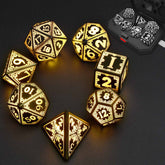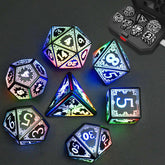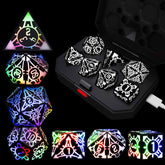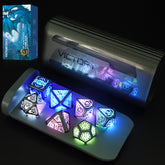How Does D&D Combat Work?
Dungeons & Dragons (D&D) is an immersive tabletop fantasy role-playing game that takes players on epic adventures in imaginary realms. Combat, a crucial element of the game, involves engaging mechanics and dice rolls, particularly with the iconic 20-sided die, or d20. It can be a lot of fun to learn how to play.
What are the fundamental mechanics of D&D?

At its core, D&D relies on dice rolls to determine the outcomes of various actions, including combat, spellcasting, and interactions with non-player characters (NPCs). The primary die used is the d20, which greatly influences the direction of the narrative with each roll.
What are the steps involved in D&D combat?
Combat in D&D follows a structured sequence of rounds and turns, requiring strategic decision-making and quick thinking. A player's turn consists of three phases:
- Move Phase: Players can guide their characters across the terrain, covering a distance based on their character's speed.
- Action Phase: Each turn grants a player one action, such as launching an attack, casting a spell, or using an item.
- Bonus Action Phase: This phase provides an additional opportunity for a specific action, often with certain limitations, such as consuming a healing potion or preparing a weapon.
Is D&D combat focused?
D&D combat seamlessly combines focus and strategy, demanding players to make quick decisions while also encouraging thoughtful approaches to maximize their character's abilities and resources.
How do you perform an attack in D&D?

Attacking in D&D begins with rolling a d20 to determine the success of the strike. The target's Armor Class (AC) sets the threshold, and rolling equal to or higher than the AC results in a successful hit. Upon hitting, the player then rolls damage dice, which depend on the weapon or spell being used.
Which dice are used for attacks in D&D?
The dice used for attacks vary depending on the chosen weapon or spell. For example, a longsword deals 1d8+3 slashing damage, while a fiery spell like Fireball inflicts 8d6 fire damage.
Here's an illustrative example of an attack in D&D:

Let's consider a fighter character wielding a longsword. Rolling a d20 produces a result of 16, surpassing the target's AC of 15. Rolling for damage, using 1d8+3, results in a total of 7. The adversary takes 7 points of slashing damage and is affected accordingly.
D&D combat offers an exciting and dynamic aspect of the game. Mastering the art of attacks, spellcasting, and strategic maneuvering enables players to navigate their quests with finesse and style.







